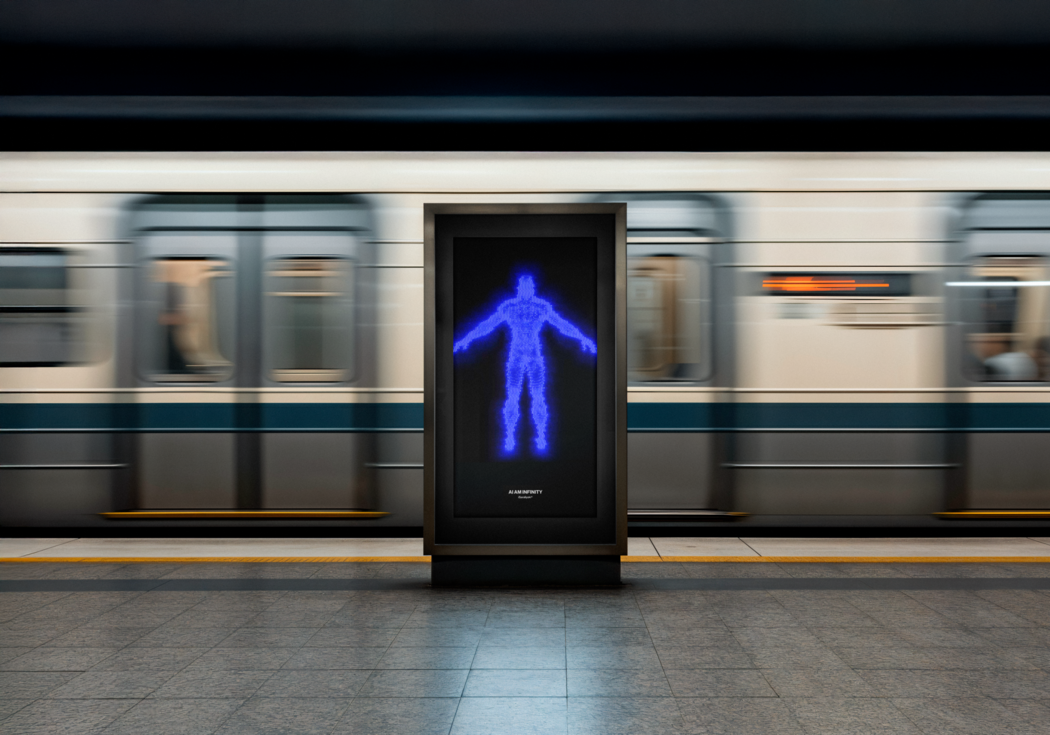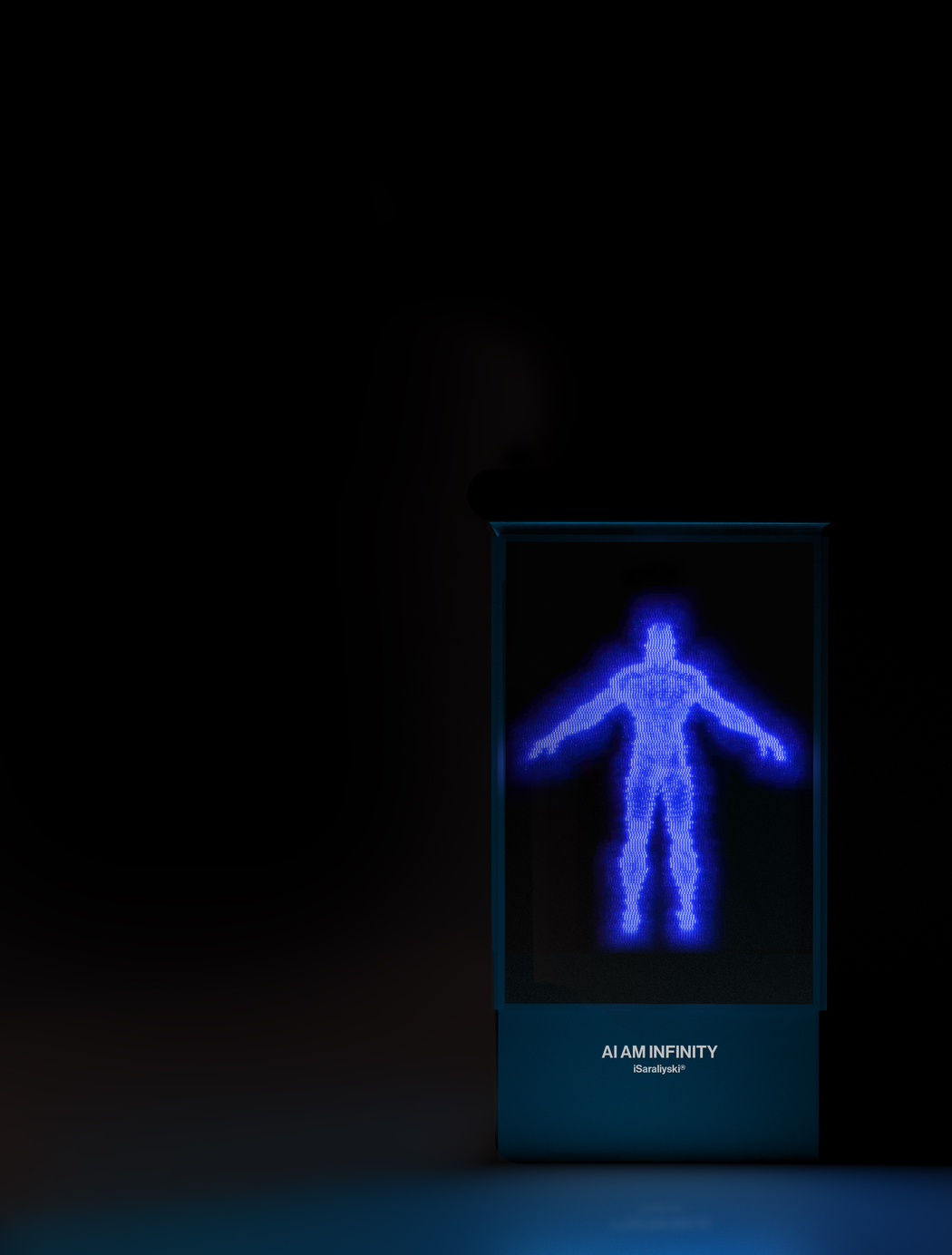Ivaylo Saraliyski
Year of birth: 1993.
Where do you live: Sofia, Bulgaria.
Your education: BA in Printmaking – National Academy of Art, MA in Poster and Visual Communication – National Academy of Art, PhD in Visual Arts – New Bulgarian University.
Describe your art in three words: Symbolic, hybrid, intuitive.
Your discipline: Visual Arts / Video & Digital Media.
Instagram
Can you tell us more about the creative process behind “AI AM INFINITY” and how you approached the concept of merging human expression with artificial intelligence?
The process behind AI AM INFINITY began with a question rather than a concept: What happens when the human subconscious meets an algorithmic mirror? I set out to build a video installation that evolves continuously—a visual loop where form, light, and motion are driven by generative systems. Through layering and feedback, I created an environment that feels both synthetic and symbolic. The work blurs authorship—once the system begins to unfold, it starts to speak back. My role shifts from creator to curator, shaping a flow that’s never quite fixed. The result is not a narrative, but a deeply immersive experience—a visual echo that keeps unfolding.
 Ivaylo Saraliyski | AI AM INFINITY
Ivaylo Saraliyski | AI AM INFINITY
The installation seems to focus on the evolution of the relationship between humans and AI. What inspired you to explore this theme through your artwork?
Much of my work explores archetypal systems—like Tarot—which evolve over time but retain symbolic depth. AI, to me, is a new kind of mythology. It absorbs our data, habits, aesthetics—and gives something back, but transformed. I was inspired by this loop of reflection and mutation. AI AM INFINITY is an attempt to visualize that feedback spiral—not to resolve it, but to dwell inside it.
How do you think the merging of human intuition and computational power can reshape the future of art and creativity?
The fusion of intuition and computation creates a space that neither could reach alone. It’s not just about speeding up creative processes—it’s about accessing new forms of seeing and sensing. Artists have always explored thresholds. Now, we’re exploring the edge where the human mind meets machine perception. I think the future of creativity lies in these liminal spaces.
In your project, you mention the continuous transformation of the piece. What do you hope viewers take away from this sense of fluidity and change?
I hope they enter a contemplative state—where time softens and perception opens. The looped nature of the video intentionally resists closure. There’s no beginning, no resolution. Only a visual meditation on becoming. I want viewers to sense that they are not watching a fixed work, but witnessing a living system that reflects their own state of flux.
 Ivaylo Saraliyski | AI AM INFINITY
Ivaylo Saraliyski | AI AM INFINITY
How does “AI AM INFINITY” challenge the boundaries between traditional art forms and digital technology?
By refusing to separate them. While rooted in digital creation, the work carries a strong visual symbolism and formal clarity reminiscent of traditional composition. As a video installation, it frames time through light and motion, but also occupies space like a sculptural presence. The glowing figure is central—shifting constantly between image and energy, presence and absence. This hybridity is the challenge—and the invitation.
Could you share some insights into the symbolism of the glowing figure in the installation and its connection to the broader themes of the work?
The glowing figure is a kind of transhuman vessel. It carries traces of the human body, yet it pulses with digital energy. Its movements are not fully natural, nor entirely artificial—they exist in between. For me, it represents a liminal consciousness: something that is becoming, dissolving, and re-forming endlessly. It embodies the collapse of boundaries between flesh and code.
What role do you believe art plays in facilitating the dialogue between technology and humanity, especially as AI continues to evolve?
Art can’t compete with the speed or scale of AI—but it doesn’t need to. What art offers is intimacy, ambiguity, and resonance. It slows us down just enough to feel, question, and wonder. In that sense, it’s not just a bridge between technology and humanity—it’s a mirror and a compass. As AI evolves, we need art more than ever to help us stay emotionally and ethically attuned.

Leave a Reply